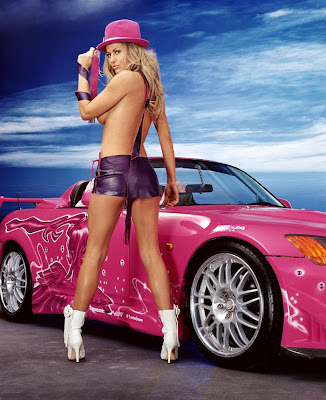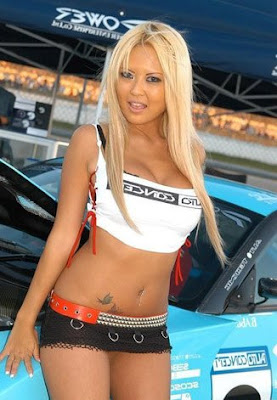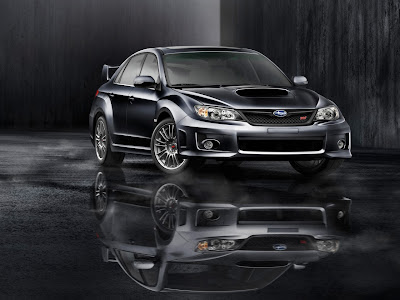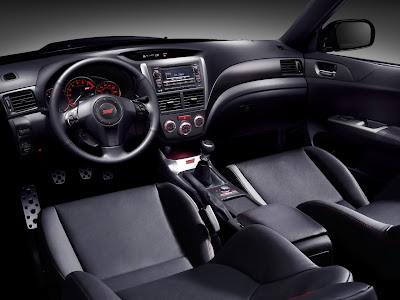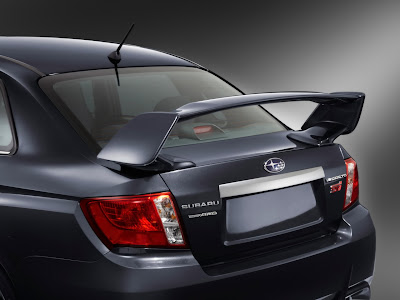




The award-winning Acura MDX luxury SUV sets even higher standards in 2010 for styling, performance, technology and safety. For 2010, the Acura MDX features a fresh new exterior look, revised powertrain that includes a new 6-speed automatic, chassis refinements, more comfort, and improved technology along with the introduction of an all-new Advance Package - making the class leader even better.
Visually, the 7-passenger 2010 Acura MDX receives more aggressive styling in the form of new front and rear bodywork, a bold new front grille and numerous new trim enhancements. Under the hood, the Acura MDX receives a more refined 3.7L V-6 engine that teams with an all-new 6-speed automatic transmission for better performance and improved fuel efficiency. Inside, the Acura MDX receives a host of new features and technologies that make it even more luxurious.
Ride and handling have been enhanced as a result of a revised power steering system, stiffer rear trailing arm mounting, body rigidity improvements and reduced overall NVH. Thanks to Acura's exclusive Super Handling All-Wheel Drive (SH-AWD) system, the Acura MDX's handling provides confident on- and off-road handling in addition to excellent foul weather performance.
To expand the dynamic capabilities for 2010 MDX, a new Advance package, with a revised Active Damper System and larger 19-inch wheels and tires, further enhances handling while retaining the comfortable, quiet and controlled ride quality expected of a luxury vehicle.
The 2010 Acura MDX exterior gets a fresh new look as a result of Acura's signature design front grille, a new front fascia, revised hood, new side sills, a new rear fascia matched with rolled edge polished stainless-steel exhaust finishers, revised taillights with brighter LED lights, many new trim pieces and available 19-inch diameter 7-spoke aluminum-alloy wheels.
Inside, the 2010 MDX benefits from the expanded use of Milano leather, a new thicker sport steering wheel with racing-inspired paddle shifters, new gauges, easier to understand button placement for center stack functions, available ventilated front seats and upgraded interior trim. In addition, a host of new technology is available including AcuraLink Real-Time Weather and Traffic Rerouting. Other available features include a new full VGA 8-inch navigation screen, a new rear view camera with three unique view choices, upgraded rear entertainment system, an updated audio system with a dedicated 15 GB hard disk drive (HDD) and USB port connectivity, even more LED lighting - and the list goes on.
In keeping with Acura's leadership in the application of advanced, customer-relevant features, the 2010 Acura MDX is available with an array of technologies to improve convenience, including an all-new blind spot information system and Adaptive Cruise Control (ACC), and enhance safety, with Acura's unique Collision Mitigation Braking System (CMBS).
Powertrain
For 2010 the Acura MDX receives a new 3.7-liter VTEC V-6. The engine continues Acura's longstanding mission to provide V-8 level horsepower and torque while retaining the size and fuel efficiency of a V-6. Based on the previous Acura MDX's powerplant, the newly refined 3.7L V-6 develops 300 horsepower and 270 lb-ft of torque to provide immediate throttle response, outstanding low- and mid-range torque and excellent high-rpm power. To widen the powerband while simultaneously improving fuel efficiency, the latest 3.7-liter engine has the patented Variable Valve Timing and Lift Electronic Control (VTEC) system applied to the intake valves, revised high-lift camshaft specs during VTEC operation, a computer controlled dual-stage induction system and an electronic Drive-by-Wire throttle system.
Internally, the new 3.7L V-6 makes use of special heavy-duty components including a more rigid cylinder block, high-strength crankshaft, heavy-duty connecting rods, high compression-ratio pistons, cylinder heads with improved cooling, new intake valve springs, a new EGR system, unique long-reach spark plugs, a larger throttle body and other features.
EPA estimated city/highway fuel mileage of 16/21 mpg (an improvement of 1 mpg city and 1 mpg highway over the 2009 model) and a large 21-gallon fuel capacity mean the Acura MDX is perfect for long drives. Like all 2010 Acura vehicles, the MDX complies with the latest EPA TIER 2 - BIN 5 and CARB LEV II ULEV emissions standards.
The 3.7L V-6 is coupled with a brand-new Sequential SportShift 6-speed automatic transmission along with a new multi-clutch torque converter. With comparatively "short" gearing in the first five forward gears, acceleration is enhanced - while fuel efficiency and quiet cruising are optimized with a relaxed Sixth gear ratio. The transmission offers two automatic shift modes, or can be operated manually via racing-inspired steering wheel paddle shifters. Grade Logic Control, Shift Hold Control, Cornering G Shift Control and Hill Start Assist make the new 6-speed the most advanced automatic transmission ever offered by Acura. To support the Acura MDX's 5,000 pound towing capacity, a special front-mount transmission fluid cooler is employed.
The Acura MDX puts power to the ground through Acura's acclaimed Super Handling All-Wheel Drive (SH-AWD) system, an innovative full-time all-wheel-drive system that uses torque vectoring to actively distribute the optimum amount of power not only between the front and rear axles, but also between the left and right rear wheels. With torque vectoring (and by selectively overdriving the outside rear wheel while cornering) the yaw moment of the Acura MDX can be controlled throughout a turn as the SH-AWD system reduces understeer to greatly enhance handling precision and ultimate cornering ability. Working in conjunction with the Acura MDX's standard Vehicle Stability Assist (VSA) with traction control, SH-AWD provides enhanced power delivery and driver control whether it be on-road or off-road, in dry, rain, snow or ice.
When towing, special Trailer Stability Assist algorithms built into the VSA logic help stabilize the vehicle after sensing oscillations of the vehicle or trailer. The Acura MDX's SH-AWD system is further enhanced with hill logic that automatically adjusts the front/rear torque distribution based on the incline of the hill grades.
Chassis
With an emphasis on top-level handling performance, Acura MDX engineers targeted the world-class dynamics and driving feel of the top European SUV competitors. This led to the development of a long wheelbase platform and a sophisticated suspension system tuned at Germany's famed Nürburgring race circuit.
The Acura MDX's 4-wheel fully-independent suspension makes use of MacPherson struts in front teamed with a multi-link rear suspension design that is mounted to a rigid unit body structure with isolated subframes. The front suspension also uses unique hydro-compliance bushings that provide superior ride isolation and chassis vibration control. The rear suspension features aluminum-alloy uprights to reduce unsprung weight for improved response, while special trailing-arm mounting points reduce body squat during acceleration. For 2010, the Acura MDX uses stiffer rear trailing arm mounts, incorporates numerous body rigidity improvements and delivers reduced overall NVH.
As part of the available Advance Package, the Active Damper System gives the 2010 Acura MDX an elevated level of handling precision designed to satisfy the most discriminating drivers - all while maintaining a smooth ride. The Acura MDX's Active Damper System features a new algorithm which provides two driver-selectable settings -Comfort and Sport -that tailor the suspension dampers for a more comfortable or more sporting ride. For 2010, the Active Dampers have been re-tuned for provide a more refined ride for Comfort mode and a more natural feeling Sport mode.
Using "active" Magneto-Rheological fluid dampers and predictive computer algorithms, the Acura MDX's Active Damper System can respond in as little as five milliseconds (0.005 sec.) to individually adjust the damping force of the shock absorbers ahead of actual body movements to provide improved transient handling, road isolation and body control.
The Comfort mode allows for a more relaxed driving experience by prioritizing road isolation and reduced passenger fatigue caused by road inputs, while the Sport mode prioritizes handling response and vehicle body control to allow for spirited driving with high levels of precision and vehicle composure.
For 2010, new (lighter) 18-inch diameter 5-spoke aluminum-alloy wheels are standard with 19-inch diameter 7-spoke aluminum-alloy wheels available as part of the Advance Package.
For excellent stopping power and control, the Acura MDX employs large 13.0-inch diameter ventilated front brake rotors and 13.2-inch solid rear brake rotors along with anti-lock brakes (ABS) with Electronic Brake Distribution (EBD) and Brake Assist.
Interior
For 2010, new attention to detail and added luxury further distinguish the Acura MDX interior. Expanded use of Milano premium leather to the available Technology Package, improved look and feel of interior trim materials, relocated front seat headrests for improved comfort, more detailed leather stitching (such as the Lancia-style stitching on the steering wheel and shift knob), thicker steering wheel grip, increased use of LED interior lighting and revised cockpit controls make it clear that the Acura MDX is focused on the driver - but not at the expense of passenger comfort.
The power driver seat adjusts 10 ways for optimum comfort, and the front passenger seat is 8-way power adjustable. The second-row outboard seats mirror the style and lateral support of the front seats, giving the interior a unique feel that highlights the Acura MDX's blend of sport and utility. Convenience and cargo features abound, including under-floor storage in the rear cargo area and a standard power-operated rear tailgate. There are multiple configurations of the Acura MDX's three rows of seating thus enabling a maximum useable cargo volume of 83.5 cubic feet. Additionally, a load flat floor is available when the second and third row seats are folded down.
The Acura MDX offers a formidable list of standard equipment including items such as a leather trimmed interior, power moonroof, power windows, leather-wrapped multi-function steering wheel, a Multi-Information Display (MID) that allows access to multiple electronic functions, a tri-zone climate control system with humidity control and Bluetooth HandsFreeLink wireless telephone interface. For 2010, now standard are steering wheel mounted paddle shifters, an auto-dimming rearview mirror with integrated rear view camera screen and LED backlit instrumentation. Also standard with the Acura MDX is an 8-speaker, 253-watt Acura Premium Sound System that features an AM/FM tuner, in-dash 6-disc CD changer, WMA player, MP3 capability, XM Radio and an auxiliary jack for connecting personal audio devices.
The Technology Package's Acura Navigation System with Voice Recognition system uses a new 8-inch full VGA high-resolution color display positioned high up in the center of the instrument panel where it is close to the driver's line of sight. A new rearview camera system offers three different rear view angles -normal rear view, wide angle rear view and a tow-friendly top view.
New for 2010 is AcuraLink Real-Time Weather that includes weather radar image maps. The Technology Package also includes a GPS-linked, solar-sensing tri-zone climate control system that automatically adjusts the temperature and fan speed according to the position of the sun.
A popular aspect of the Technology Package is Acura's renowned Acura/ELS Surround 10-speaker Premium Audio System featuring a 410-watt Digital Sound Processor amplifier along with a built-in 15-gigabyte hard disk drive (HDD) media storage system that allows the Acura MDX owner to download and store about 3,500 songs for later playback. The Acura/ELS Surround premium audio system offers DVD-Audio, DTS, CD, AM/FM radio, XM Radio with Note function music reminder, Bluetooth Audio, along with USB port and AUX jack connectivity.
Rich with luxury, comfort, performance and technology upgrades for the 2010 MDX is a new Advance Package that replaces and goes beyond the previously available Sport Package. Building on the items in the Technology Package, the Advance Package adds ventilated front seats with specially contoured seat foam covered by perforated Milano premium leather, a sport steering wheel with unique design racing-inspired paddle shifters on the steering wheel and textured metallic interior accents.
The Advance Package also includes the Collision Mitigating Braking System (CMBS), Adaptive Cruise Control (ACC), blind spot information system (BSI) and the Active Damper System. In addition, the Advance Package delivers 19x8-inch 7-spoke aluminum-alloy wheels and auto-leveling HID front headlights.
An available Entertainment Package includes a new Rear Entertainment System (RES) complete with a DVD player, power folding 9-inch full VGA color screen (with 400-percent improved resolution), dual wireless headphones, a wireless illuminated remote control and 115-volt plug located in the center console.
Safety
In keeping with Acura's "Safety Through Innovation" initiative, the 2010 Acura MDX provides state-of-the-art safety for its passengers, including the application of Acura's Advanced Compatibility Engineering (ACE) body structure.
ACE employs a network of front frame structures that work to absorb and more evenly distributes collision forces throughout the vehicle and also helps maintain the integrity of the passenger cabin in the event of a severe frontal collision. A special frame member located below the Acura MDX's front bumper is designed to engage the front bumper of a lower vehicle, allowing the bumper systems of both vehicles to attenuate crash energy more efficiently.
Numerous standard "active safety" features that help the Acura MDX driver reduce the risk of collision include Vehicle Stability Assist (VSA) along with an anti-lock braking system (ABS) with Electronic Brake Distribution (EBD) and Brake Assist. An additional active safety feature included in the available Advance Package is the Collision Mitigating Braking System (CMBS) which helps the driver reduce the likelihood of a collision by alerting the driver to potential collision situations and activating the brakes if the system determines a collision likely is unavoidable. VSA has been retuned for 2010 to deliver a 10-percent improvement in performance during hard acceleration on slippery surfaces.
Inside the handsomely appointed Acura MDX interior, occupants will find advanced safety features including the latest generation of dual-stage, multiple-threshold airbags for the driver and front passenger.
There are also knee bolsters, front seat belts with an automatic tensioning system with integrated load limiters, side airbags for the driver and front passenger along with side curtain airbags (with a rollover sensor) for all outboard occupants. Active front head restraints help reduce the likelihood of neck injury for front seat passengers and LATCH (Lower Anchors and Tethers for Children) mounting systems in the second row seating allow quick and secure installation of child seats.
The 2010 MDX is engineered to surpass the existing FMVSS 216 government roof crush test standard of 1.5 times the curb weight of the vehicle. However, the Acura MDX is so well engineered that it is anticipated to already meet the upcoming roof crush standard of 3.0 times curb weight. Efficient use of high-strength steel creates a body structure with the stiffness to allow such results while still permitting the use a large glass moonroof.
Developed by Acura designers and engineers in California and Ohio, and tested in the company's advanced safety laboratories in Raymond, Ohio, the Acura MDX is assembled in Alliston, Ontario, Canada.
Visually, the 7-passenger 2010 Acura MDX receives more aggressive styling in the form of new front and rear bodywork, a bold new front grille and numerous new trim enhancements. Under the hood, the Acura MDX receives a more refined 3.7L V-6 engine that teams with an all-new 6-speed automatic transmission for better performance and improved fuel efficiency. Inside, the Acura MDX receives a host of new features and technologies that make it even more luxurious.
Ride and handling have been enhanced as a result of a revised power steering system, stiffer rear trailing arm mounting, body rigidity improvements and reduced overall NVH. Thanks to Acura's exclusive Super Handling All-Wheel Drive (SH-AWD) system, the Acura MDX's handling provides confident on- and off-road handling in addition to excellent foul weather performance.
To expand the dynamic capabilities for 2010 MDX, a new Advance package, with a revised Active Damper System and larger 19-inch wheels and tires, further enhances handling while retaining the comfortable, quiet and controlled ride quality expected of a luxury vehicle.
The 2010 Acura MDX exterior gets a fresh new look as a result of Acura's signature design front grille, a new front fascia, revised hood, new side sills, a new rear fascia matched with rolled edge polished stainless-steel exhaust finishers, revised taillights with brighter LED lights, many new trim pieces and available 19-inch diameter 7-spoke aluminum-alloy wheels.
Inside, the 2010 MDX benefits from the expanded use of Milano leather, a new thicker sport steering wheel with racing-inspired paddle shifters, new gauges, easier to understand button placement for center stack functions, available ventilated front seats and upgraded interior trim. In addition, a host of new technology is available including AcuraLink Real-Time Weather and Traffic Rerouting. Other available features include a new full VGA 8-inch navigation screen, a new rear view camera with three unique view choices, upgraded rear entertainment system, an updated audio system with a dedicated 15 GB hard disk drive (HDD) and USB port connectivity, even more LED lighting - and the list goes on.
In keeping with Acura's leadership in the application of advanced, customer-relevant features, the 2010 Acura MDX is available with an array of technologies to improve convenience, including an all-new blind spot information system and Adaptive Cruise Control (ACC), and enhance safety, with Acura's unique Collision Mitigation Braking System (CMBS).
Powertrain
For 2010 the Acura MDX receives a new 3.7-liter VTEC V-6. The engine continues Acura's longstanding mission to provide V-8 level horsepower and torque while retaining the size and fuel efficiency of a V-6. Based on the previous Acura MDX's powerplant, the newly refined 3.7L V-6 develops 300 horsepower and 270 lb-ft of torque to provide immediate throttle response, outstanding low- and mid-range torque and excellent high-rpm power. To widen the powerband while simultaneously improving fuel efficiency, the latest 3.7-liter engine has the patented Variable Valve Timing and Lift Electronic Control (VTEC) system applied to the intake valves, revised high-lift camshaft specs during VTEC operation, a computer controlled dual-stage induction system and an electronic Drive-by-Wire throttle system.
Internally, the new 3.7L V-6 makes use of special heavy-duty components including a more rigid cylinder block, high-strength crankshaft, heavy-duty connecting rods, high compression-ratio pistons, cylinder heads with improved cooling, new intake valve springs, a new EGR system, unique long-reach spark plugs, a larger throttle body and other features.
EPA estimated city/highway fuel mileage of 16/21 mpg (an improvement of 1 mpg city and 1 mpg highway over the 2009 model) and a large 21-gallon fuel capacity mean the Acura MDX is perfect for long drives. Like all 2010 Acura vehicles, the MDX complies with the latest EPA TIER 2 - BIN 5 and CARB LEV II ULEV emissions standards.
The 3.7L V-6 is coupled with a brand-new Sequential SportShift 6-speed automatic transmission along with a new multi-clutch torque converter. With comparatively "short" gearing in the first five forward gears, acceleration is enhanced - while fuel efficiency and quiet cruising are optimized with a relaxed Sixth gear ratio. The transmission offers two automatic shift modes, or can be operated manually via racing-inspired steering wheel paddle shifters. Grade Logic Control, Shift Hold Control, Cornering G Shift Control and Hill Start Assist make the new 6-speed the most advanced automatic transmission ever offered by Acura. To support the Acura MDX's 5,000 pound towing capacity, a special front-mount transmission fluid cooler is employed.
The Acura MDX puts power to the ground through Acura's acclaimed Super Handling All-Wheel Drive (SH-AWD) system, an innovative full-time all-wheel-drive system that uses torque vectoring to actively distribute the optimum amount of power not only between the front and rear axles, but also between the left and right rear wheels. With torque vectoring (and by selectively overdriving the outside rear wheel while cornering) the yaw moment of the Acura MDX can be controlled throughout a turn as the SH-AWD system reduces understeer to greatly enhance handling precision and ultimate cornering ability. Working in conjunction with the Acura MDX's standard Vehicle Stability Assist (VSA) with traction control, SH-AWD provides enhanced power delivery and driver control whether it be on-road or off-road, in dry, rain, snow or ice.
When towing, special Trailer Stability Assist algorithms built into the VSA logic help stabilize the vehicle after sensing oscillations of the vehicle or trailer. The Acura MDX's SH-AWD system is further enhanced with hill logic that automatically adjusts the front/rear torque distribution based on the incline of the hill grades.
Chassis
With an emphasis on top-level handling performance, Acura MDX engineers targeted the world-class dynamics and driving feel of the top European SUV competitors. This led to the development of a long wheelbase platform and a sophisticated suspension system tuned at Germany's famed Nürburgring race circuit.
The Acura MDX's 4-wheel fully-independent suspension makes use of MacPherson struts in front teamed with a multi-link rear suspension design that is mounted to a rigid unit body structure with isolated subframes. The front suspension also uses unique hydro-compliance bushings that provide superior ride isolation and chassis vibration control. The rear suspension features aluminum-alloy uprights to reduce unsprung weight for improved response, while special trailing-arm mounting points reduce body squat during acceleration. For 2010, the Acura MDX uses stiffer rear trailing arm mounts, incorporates numerous body rigidity improvements and delivers reduced overall NVH.
As part of the available Advance Package, the Active Damper System gives the 2010 Acura MDX an elevated level of handling precision designed to satisfy the most discriminating drivers - all while maintaining a smooth ride. The Acura MDX's Active Damper System features a new algorithm which provides two driver-selectable settings -Comfort and Sport -that tailor the suspension dampers for a more comfortable or more sporting ride. For 2010, the Active Dampers have been re-tuned for provide a more refined ride for Comfort mode and a more natural feeling Sport mode.
Using "active" Magneto-Rheological fluid dampers and predictive computer algorithms, the Acura MDX's Active Damper System can respond in as little as five milliseconds (0.005 sec.) to individually adjust the damping force of the shock absorbers ahead of actual body movements to provide improved transient handling, road isolation and body control.
The Comfort mode allows for a more relaxed driving experience by prioritizing road isolation and reduced passenger fatigue caused by road inputs, while the Sport mode prioritizes handling response and vehicle body control to allow for spirited driving with high levels of precision and vehicle composure.
For 2010, new (lighter) 18-inch diameter 5-spoke aluminum-alloy wheels are standard with 19-inch diameter 7-spoke aluminum-alloy wheels available as part of the Advance Package.
For excellent stopping power and control, the Acura MDX employs large 13.0-inch diameter ventilated front brake rotors and 13.2-inch solid rear brake rotors along with anti-lock brakes (ABS) with Electronic Brake Distribution (EBD) and Brake Assist.
Interior
For 2010, new attention to detail and added luxury further distinguish the Acura MDX interior. Expanded use of Milano premium leather to the available Technology Package, improved look and feel of interior trim materials, relocated front seat headrests for improved comfort, more detailed leather stitching (such as the Lancia-style stitching on the steering wheel and shift knob), thicker steering wheel grip, increased use of LED interior lighting and revised cockpit controls make it clear that the Acura MDX is focused on the driver - but not at the expense of passenger comfort.
The power driver seat adjusts 10 ways for optimum comfort, and the front passenger seat is 8-way power adjustable. The second-row outboard seats mirror the style and lateral support of the front seats, giving the interior a unique feel that highlights the Acura MDX's blend of sport and utility. Convenience and cargo features abound, including under-floor storage in the rear cargo area and a standard power-operated rear tailgate. There are multiple configurations of the Acura MDX's three rows of seating thus enabling a maximum useable cargo volume of 83.5 cubic feet. Additionally, a load flat floor is available when the second and third row seats are folded down.
The Acura MDX offers a formidable list of standard equipment including items such as a leather trimmed interior, power moonroof, power windows, leather-wrapped multi-function steering wheel, a Multi-Information Display (MID) that allows access to multiple electronic functions, a tri-zone climate control system with humidity control and Bluetooth HandsFreeLink wireless telephone interface. For 2010, now standard are steering wheel mounted paddle shifters, an auto-dimming rearview mirror with integrated rear view camera screen and LED backlit instrumentation. Also standard with the Acura MDX is an 8-speaker, 253-watt Acura Premium Sound System that features an AM/FM tuner, in-dash 6-disc CD changer, WMA player, MP3 capability, XM Radio and an auxiliary jack for connecting personal audio devices.
The Technology Package's Acura Navigation System with Voice Recognition system uses a new 8-inch full VGA high-resolution color display positioned high up in the center of the instrument panel where it is close to the driver's line of sight. A new rearview camera system offers three different rear view angles -normal rear view, wide angle rear view and a tow-friendly top view.
New for 2010 is AcuraLink Real-Time Weather that includes weather radar image maps. The Technology Package also includes a GPS-linked, solar-sensing tri-zone climate control system that automatically adjusts the temperature and fan speed according to the position of the sun.
A popular aspect of the Technology Package is Acura's renowned Acura/ELS Surround 10-speaker Premium Audio System featuring a 410-watt Digital Sound Processor amplifier along with a built-in 15-gigabyte hard disk drive (HDD) media storage system that allows the Acura MDX owner to download and store about 3,500 songs for later playback. The Acura/ELS Surround premium audio system offers DVD-Audio, DTS, CD, AM/FM radio, XM Radio with Note function music reminder, Bluetooth Audio, along with USB port and AUX jack connectivity.
Rich with luxury, comfort, performance and technology upgrades for the 2010 MDX is a new Advance Package that replaces and goes beyond the previously available Sport Package. Building on the items in the Technology Package, the Advance Package adds ventilated front seats with specially contoured seat foam covered by perforated Milano premium leather, a sport steering wheel with unique design racing-inspired paddle shifters on the steering wheel and textured metallic interior accents.
The Advance Package also includes the Collision Mitigating Braking System (CMBS), Adaptive Cruise Control (ACC), blind spot information system (BSI) and the Active Damper System. In addition, the Advance Package delivers 19x8-inch 7-spoke aluminum-alloy wheels and auto-leveling HID front headlights.
An available Entertainment Package includes a new Rear Entertainment System (RES) complete with a DVD player, power folding 9-inch full VGA color screen (with 400-percent improved resolution), dual wireless headphones, a wireless illuminated remote control and 115-volt plug located in the center console.
Safety
In keeping with Acura's "Safety Through Innovation" initiative, the 2010 Acura MDX provides state-of-the-art safety for its passengers, including the application of Acura's Advanced Compatibility Engineering (ACE) body structure.
ACE employs a network of front frame structures that work to absorb and more evenly distributes collision forces throughout the vehicle and also helps maintain the integrity of the passenger cabin in the event of a severe frontal collision. A special frame member located below the Acura MDX's front bumper is designed to engage the front bumper of a lower vehicle, allowing the bumper systems of both vehicles to attenuate crash energy more efficiently.
Numerous standard "active safety" features that help the Acura MDX driver reduce the risk of collision include Vehicle Stability Assist (VSA) along with an anti-lock braking system (ABS) with Electronic Brake Distribution (EBD) and Brake Assist. An additional active safety feature included in the available Advance Package is the Collision Mitigating Braking System (CMBS) which helps the driver reduce the likelihood of a collision by alerting the driver to potential collision situations and activating the brakes if the system determines a collision likely is unavoidable. VSA has been retuned for 2010 to deliver a 10-percent improvement in performance during hard acceleration on slippery surfaces.
Inside the handsomely appointed Acura MDX interior, occupants will find advanced safety features including the latest generation of dual-stage, multiple-threshold airbags for the driver and front passenger.
There are also knee bolsters, front seat belts with an automatic tensioning system with integrated load limiters, side airbags for the driver and front passenger along with side curtain airbags (with a rollover sensor) for all outboard occupants. Active front head restraints help reduce the likelihood of neck injury for front seat passengers and LATCH (Lower Anchors and Tethers for Children) mounting systems in the second row seating allow quick and secure installation of child seats.
The 2010 MDX is engineered to surpass the existing FMVSS 216 government roof crush test standard of 1.5 times the curb weight of the vehicle. However, the Acura MDX is so well engineered that it is anticipated to already meet the upcoming roof crush standard of 3.0 times curb weight. Efficient use of high-strength steel creates a body structure with the stiffness to allow such results while still permitting the use a large glass moonroof.
Developed by Acura designers and engineers in California and Ohio, and tested in the company's advanced safety laboratories in Raymond, Ohio, the Acura MDX is assembled in Alliston, Ontario, Canada.
